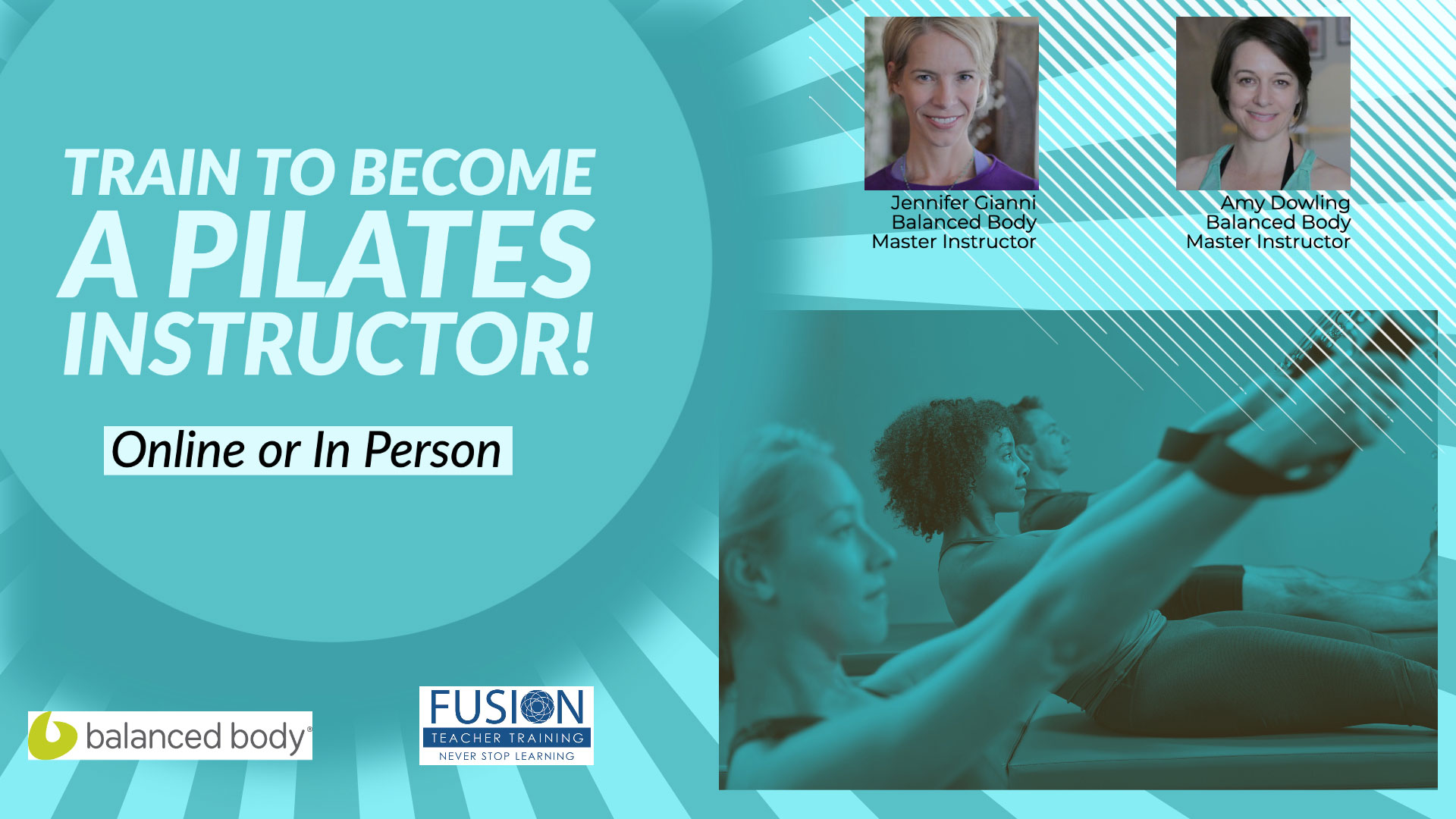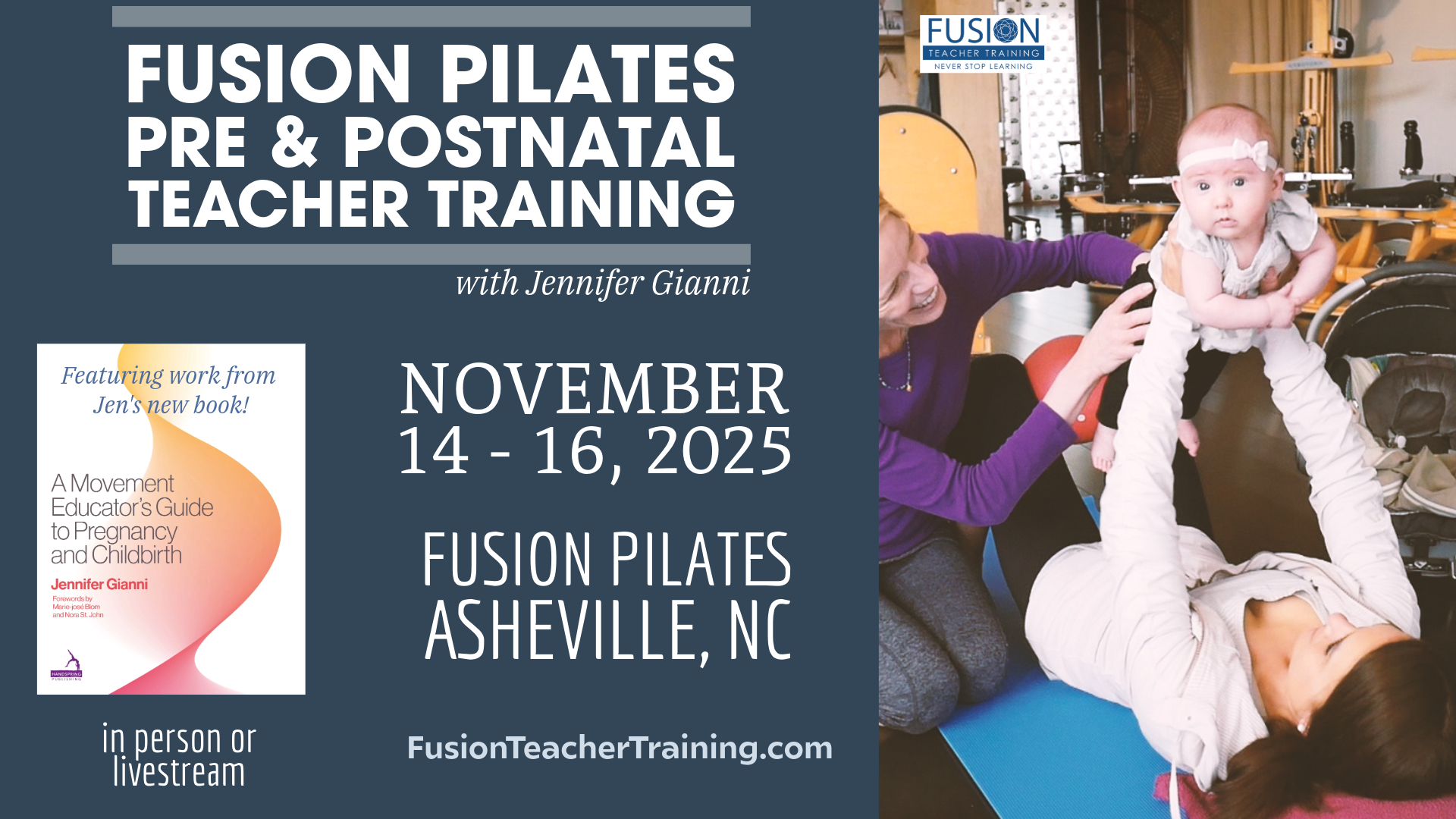 Marie-José Blom is an amazing teacher of teachers with a wide scope of experience. She is the creator of the SmartSpine™ line of products as well as the Stability Sling System. Her first online workshop is live at FusionFitnessOnline right now (and now offers 5 PMA CECs!). We had the opportunity to interview her as she conducts her Pilates Leadership Introspective course in Tokyo with our good friends at the beautiful Studio Natural Flow.
Marie-José Blom is an amazing teacher of teachers with a wide scope of experience. She is the creator of the SmartSpine™ line of products as well as the Stability Sling System. Her first online workshop is live at FusionFitnessOnline right now (and now offers 5 PMA CECs!). We had the opportunity to interview her as she conducts her Pilates Leadership Introspective course in Tokyo with our good friends at the beautiful Studio Natural Flow.
Fusion: Why and how did you first develop the Stability Sling system?
Marie-José: I developed the stability sling system as a way to introduce a challenging workout to clients with special needs — but most important was that I had a way to teach alignment skills as well as “core ability.” I needed a way to create a program that was geared to the client with physical challenges (recovering from injuries, or as a postpartum program, etc.).
By designing an environment of supported neutral positions, the learning process of movement becomes easier and will then be experienced on a deeper level by the client. The Sling System makes the pure and simple approach rather challenging while also maintaining a biomechanical correctness.
All of the exercises I use with the system are modified versions of the traditional Pilates repertoire, used as a way to prepare the client for more progressive work. This approach establishes more of a solid foundation to progress from with profound results. The Sling System provides a “third hand” for the instructor enabling them to teach with more detail and efficiency.
The Sling System repertoire was carefully developed with a whole body and complete workout in mind. When taught successively in the order as presented, the goal for sound, profound, and versatile approach is achieved.
Fusion: How have you seen Pilates training change over the course of your career?
Marie-José: Before we look at the change in the training of Pilates in the last 25 years, we should consider the changes in the business model of Pilates itself. The Pilates business used to be the small entity or studio that delivered a unique form of “designer fitness.” Teachers were traditionally hand picked, often from the very dedicated longtime client base. Most were trained dancers who received an on the job training in exchange for lessons along with an internship. Teaching was a labor of love and dedication with modest pay.
Much changed when Pilates became more known and mainstream.
The studio model itself changed. Bigger studios became prevalent, and with that came the need for more instructors. This led to a new profitable Pilates related business: the business of training teachers. The individual “labor of love” is now replaced by education en group.
It is good that more opportunity was created for an instructor in training. There developed a more formal setting, with a set curriculum which requires a solid commitment on the part of the trainee. This commitment included an average of three to four month class time with real time teaching. This approach turned out some excellent instructors and by now some of these are the teacher of teachers of today.
This approach is currently considered a “boutique approach” — and for the business of training teachers it would not provide opportunity for all. It was selective.
A more profitable concept is on the rise, and the market seems to be ready. Many enthusiasts interested in a Pilates career within the past structure would find it difficult to find the time or the finances to commit to a long involved training program. To capture this market, the teacher training business adapted to a format that could cater to this segment being budget-friendly and modeled in the convenient modular weekend courses that we see today.
I also have heard the term “fast track” training (although I hope this was only a bad dream!).
My personal feeling is that when one cannot find the time and investment it takes to enter a new career through quality education — then the time is not right yet.
This new market and the demand for the weekend format formula opens up opportunity for potential teachers with all backgrounds — and this includes some with marginal education or preparation.
Most students today will finish the courses with minimal opportunity of real time teaching. This may perhaps fulfill the need for instructors as demanded by the fitness industry now that Pilates is offered in every gym in the country.
For an exclusive Pilates environment, clinical and therapeutic approaches, more in-depth education, and a suitable background is still desirable. I know this is an “old school” idea — but it is how I feel!
The real lessons and the true learning begins when the courses are finished. It is at this crossroad where the gap between the training of back then and the training of today needs to be closed.
The solution will be in the high end real time continuing education offered. Education that explores the integration of new sciences to stay updated and well informed. That and high quality online education (which I was admittedly skeptical of) and continuing support of new teachers will put skill and career growth opportunity within the reach of any motivated Pilates educator.
Fusion: What are your latest Pilates passions? What’s got your interest right now?
Marie-José: There really is not a “latest passion”; however, being passionate about the miracle of the human body — and to have the opportunity to continue the exploration of Pilates as a powerful, proactive tool that can contribute to its health, efficiency, and longevity — is surely an ongoing passion of mine.
To impart this knowledge to my clients and witness their changes and little victories, that to me on a daily basis is very rewarding.
Also, to have the opportunity to share my own evolved work through workshops with others, students and teachers alike, is rewarding to me as well — the chance to spark an enthusiasm for new discoveries and the integration into their Pilates practice is deeply gratifying and I never tire of it.
Something that has sparked my own curiosity is what is currently happening with the role of the fascial system in the body and relating these scientific outcomes to our Pilates work.
Taking the constant emerging new knowledge on this subject and using it to make Pilates an even more effective tool to address this amazing system is an ongoing joy. I have been interested in the development of this scientific research in particular for the last ten years and have attended the now well known Fascial World Conferences. This has significantly influenced my teaching with a deeper understanding ,application and integration into the Pilates work.
The research in this fascial field also validated my work with the SmartSpine system. Why and how this system works is no longer a hypothesis — and the effectiveness evidenced during use and practice with the clients can be explained. This gave me the inspiration to take the SmartSpine to another level. All of this is exciting and keeps me passionate about my work.
Fusion: We know you were very hesitant about doing an Online Workshop. Can you tell us why?
Marie-José: I was very hesitant about doing an online workshop because I am a very hands-on teacher and teaching from a computer seems very un-intuitive to me. I did not think that I would have the opportunity and the time to go enough into detail as I can in a live workshop situation. I also doubted the effectiveness of online learning for that same reason. I believed that on camera (I don’t love the camera) I cannot be myself. I decided to give it a try with the idea that if I really hated it — we just wouldn’t go live with the project.
As I struggle to get used to the camera, I found that working with Fusion on the Sling System workshop made me feel very comfortable with a warm and professional attitude, encouragement and patience. With this team, I am sold on doing it again. And the final product is very effective in delivering the information I want to deliver. The fact that the student can sit with the material, rewind and review, watch it multiple times — these are the pluses of this type of education delivery.
Fusion: What direction do you want to see our profession head in?
Marie-José: This is a challenging question.
I wish that the legacy of Pilates will be carried on in the hands of talented and caring professionals with passion, commitment, and integrity. I would love to see Pilates more integrated in the bigger picture of the multidisciplinary approach to wellness.
Fusion: If there was one thing you would like to change about our Pilates community as a whole, what would it be?
Marie-José: True learning happens when the ego dissolves. This I believe also applies in making any change or progress in your work. We need less talk about community and more actual community through sharing the tools we all create with the best interest of all our students in mind.
In the greater picture, everybody in business will benefit from a caring and sharing collaborate. This will make the Pilates infrastructure more solid.
Fusion: If you hadn’t given your passion to Pilates, what would you have done?
Marie-José: I think, here is the usual, “If I had known then what I know now…” I would have taken the medical direction. This thought still attracts me, and who knows… I feel I am not quite done yet.
Fusion: We certainly hope not — we have lots more to learn!
Watch the following video for an overview of Marie José’s online workshop Simply Challenging, available here. We have just added 5 PMA CECs, which you will receive on completion of this course.
For more info on Marie-José Blom and to see her live teaching schedule, visit Pilates Inspriation.
To check out her amazing SmartSpine™ product, please visit our Store.




Leave A Reply (1 comment So Far)
Please - comments only. All Pilates questions should be asked in the Forum. All support questions should be asked at Support.
You must be logged in to post a comment.
Well said! Thank you for such clarity on this topic….